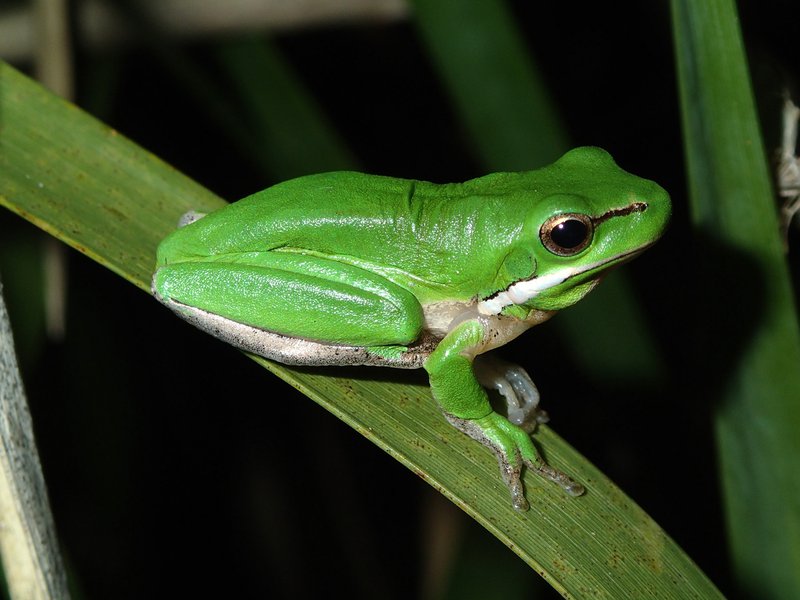Eastern Dwarf Tree Frog
Description
A small species of frog reaching up to 2.5 cm in body length. It has a bright green or bronze back, with a bronze stripe from the tip of the snout along the sides if the back is green, or small green patches if the back is bronze. There is a white stripe from under the eye to the arm. The belly is white, and the male has a yellow throat. The pupil is horizontal, and the iris is gold. The front sides of the lower legs and the groin are orange. Fingers are slightly webbed and toes are three-quarters webbed, both with small discs.
Similar Species
Looks very similar to Litoria bicolor, Litoria cooloolensis, and Litoria olongburensis in its distribution, but Litoria cooloolensis has small brown spots on its back and Litoria olongburensis has brown flecks on the throat, while Litoria bicolor is most easily distinguished by its different call.
Distribution
Found along most of the east coast and ranges from northern QLD to southern NSW, including some areas further inland. It has also been accidentally transported to Melbourne, VIC, where there are now some breeding populations.
Breeding Biology
Eggs are laid as many small clusters and attached to vegetation near the surface of the water in swamps, permanent ponds, and dams. Tadpoles can reach a total length of up to 5 cm, and are translucent gold or olive-brown in colour. If viewed from the side, the lower half of the body will be white or silver, clearly separated from the colour of the back. The tadpoles often remain near the surface water bodies, and take two and a half to four and a half months to develop into frogs. Breeds during any time of the year.
Download the FrogID Mobile App
FrogID is a national citizen science project that is helping us learn more about what is happening to Australia’s frogs. Download the FrogID app and you can discover which frogs live around you and help us count Australia's frogs!
Download today

